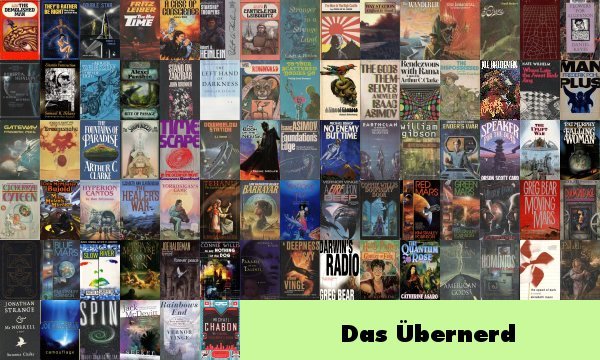 Plastic Man
Plastic Manby Kyle Baker
2004 Eisner Winner for Best New Series
2004, 2005, and 2006 Eisner Winner for Best Writer/Artist - Humor
2005 Eisner Winner for Best Title for a Younger Audience
Plastic Man is one of those instances where my preference for getting comics as trade paper backs has worked against me. I don't buy a lot of comics in the monthly magazine form since the collected editions are generally a better match for me. Every so often though I find a series where I'd like to get more of and there just isn't any. Even though there were twenty issues of Plastic Man released and the entire run earned Baker awards only two collections have ever been published. It's been almost four years since the last one so it is very unlikely that they'll ever be bound together. So I have to consider Plastic Man based on those first twelve issues. Those two books have left me wanting to read the rest of it.
The first book, On the Lam, is easy enough to describe. Plastic Man's secret identity, who happens to be a reformed mobster, is framed for a murder. When his secret identity is uncovered he has to look for the real killer while running from his partner in the FBI, his sidekick, and the law.
 That's about as straightforward superhero story you're going to find. If I stripped out the part about the FBI and the sidekick it could describe every single character published in the last fifty years. The difference here is that Plastic Man is a slapstick, loony series about a guy who changes into the craziest things possible (in fact the On the Lam book is bound in plastic with a cover that looks like Plastic Man disguised as the book). This is a cartoony book and the story exists only to give a structure to the gags.
That's about as straightforward superhero story you're going to find. If I stripped out the part about the FBI and the sidekick it could describe every single character published in the last fifty years. The difference here is that Plastic Man is a slapstick, loony series about a guy who changes into the craziest things possible (in fact the On the Lam book is bound in plastic with a cover that looks like Plastic Man disguised as the book). This is a cartoony book and the story exists only to give a structure to the gags.The second volume, Rubber Bandits, is less universal in structure than the first as it opens with a story about comic book continuity and the trend of making characters unpleasant under the guise of being "realistic". Fortunately it immediately links this back to a time traveling Abraham Lincoln. Most of the rest of the book is more friendly to new readers with shorter stories.
There's a fine line in humor between "zany" and "random". When something is suppose to be funny just because it's out of place I tend to get bored because when you could have anything then nothing is effective. Plastic Man does not stray over that line even though Baker could have easily filled the pages with pop culture references and Plastic Man mugging for the reader. Instead Baker establishes his insane situation and drops his insane characters into it which prevents the plotting from degrading to a series of panel gags about what Plastic Man turns into next. He did not forget the jokes as he wrote these stories.
The artwork is for Plastic Man is absolutely stunning. It is very firmly on the cartoony side of the realism scale which lets Baker take advantage of his hero's malleable form. Plastic Man tends to have huge reactions that tie him in knots (sometimes literally). The animation influence is given a real showcase at the end of Rubber Bandits where the last story is a Tom and Jerry homage.
The animation metaphor extends to the lack of panel borders throughout the series. He also often uses sequences where it was paced in like animation where Baker has just drawn the key frames over the course of the page. Even the backgrounds seem to be on a separate floating layer from the foregrounds due to the coloring and style differences. This book looks like a cartoon and it's an effect that is pulled off well.
After reading Baker's Plastic Man there's no one alive who I'd want to see handling the character ever again. There's little else I can add to that since it is a series where the humor will work for you or it won't. It's charmingly goofy and made me smile.

